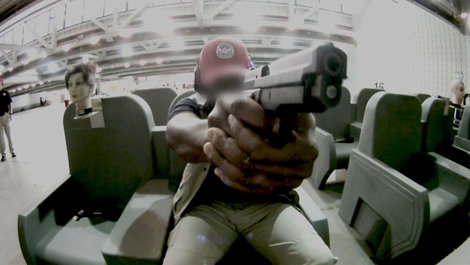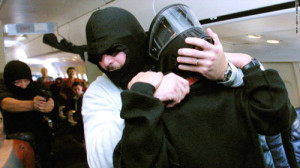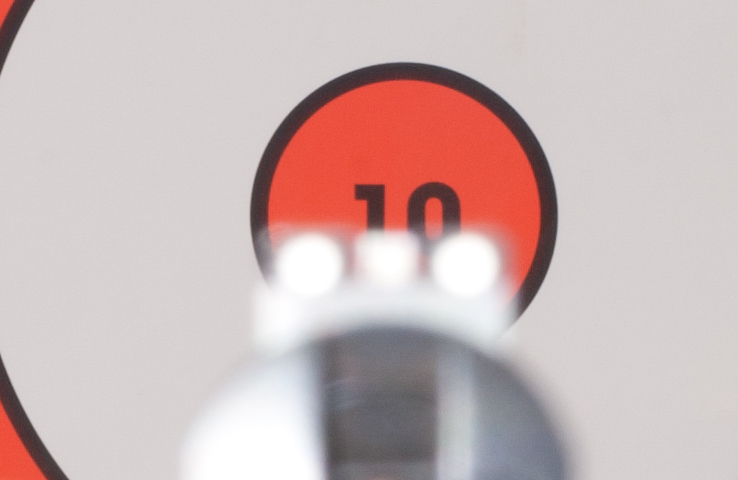The Official Body-camera Policy Standards Are Out
[su_heading size=”30″ margin=”0″]Somebody’s Watching Me[/su_heading]
[su_dropcap style=”light” size=”5″]T[/su_dropcap]echnology gives us instant access to information. If something happens such as a car accident, riot or tornado, for example, we can see it instantly through the power of digital recording and the Internet. If we need an answer to any question, we can type it into Google and within milliseconds have one – right or wrong. The public holds the same expectation now for interactions between law enforcement and the public.
What are the first two questions asked after a police shooting? Was the officer wearing a body camera, and where’s the video? The public want transparency and answers.
The idea of officers wearing body cameras has been a topic that law enforcement agencies have been investigating for years, and some of the biggest policy makers in the business have now weighed in, including the Bureau of Justice Assistance (BJA), as well as the International Association of Chiefs of Police (IACP) and a presidential task force with their policy recommendations.

[su_box title=”EXPECTATIONS” style=”glass” box_color=”#5d889a” title_color=”#ffffff” radius=”4″][/su_box]
In a perfect world, a police shooting would be captured from multiple angles and all of the questions surrounding the event would be answered. But this just isn’t possible. The difficult part is that body cameras, or more appropriately titled body-worn cameras (BWC), will not provide everything either.
BWCs are a natural technological progression for law enforcement, but at best the camera will only capture whatever is directly in front of the officer minus any obstructions such as outstretched arms in the firing position or another officer.
The camera cannot capture subtle nuances. Officers tend to develop a sixth sense through their experiences, and the camera cannot see what they are sensing or what is happening beside or behind them. Simply put, the BWC is a tool – just another piece to a very complicated puzzle. The biggest hurdle for law enforcement is managing the public’s expectations.
[su_box title=”TECHNOLOGY” style=”glass” box_color=”#5d889a” title_color=”#ffffff” radius=”4″][/su_box]
The technology involved with BWCs is advancing quickly. The Safariland Group, a respected and well-known law-enforcement products company, has a line of BWCs and has developed new software which allows BWC video to be redacted. This means the video blurs the faces of bystanders or other objects captured in the footage. The software is made by VIEVU, which uses an advanced algorithm for this process. The software is available to departments that use VIEVU’s solution cloud-hosted evidence system.
Microsoft has partnered with VIEVU in developing this new cloud technology, and the CEO is a former Seattle police officer.


[su_box title=”COST” style=”glass” box_color=”#5d889a” title_color=”#ffffff” radius=”4″][/su_box]
Budgets are finite, and many cities, counties and states have seen discretionary budgets drastically reduced in recent years. These reductions are across the board and include law enforcement. The costs associated with body cameras are not insignificant, and in fact can be staggering. The initial purchase price of a body camera is close to $1,000 per unit. Money must also be budgeted for the replacement of these cameras over time.
Data storage is the biggest cost and only grows as time goes on. A department with 107 sworn officers including detectives and administrative types can expect to pay $70,000 per year for an off-site data-storage solution. If the department elects to host their own storage, the cost could be less, but then they assume all of the liability for security and data backup.
Many departments are opting for cloud-based storage, which puts the security and backup in the hands of the vendor.
[su_box title=”PRIVACY” style=”glass” box_color=”#5d889a” title_color=”#ffffff” radius=”4″][/su_box]
This is a big concern for the officers and administrators. Questions regarding when it’s appropriate to video are proving to be tough. Some departments have a policy where the camera is turned on for every callout regardless of its nature. This may prove to be problematic when dealing with sensitive issues. It may also be problematic if the responding officers find that no crime has been committed but the call was still a private matter. Situations might include: calls where citizens are deceased; sexual assaults; or child-related incidents.
There is also the question of the officer’s privacy. This has been raised by multiple unions representing officers. The fear, they say, is that supervisors will use the video to discipline officers who may be speaking ill of management.

There is also the fear that an officer who is a whistle-blower can be tracked and punished by using video from the camera. The unions contend that officers have some expectation of privacy while on duty and while speaking with their coworkers.
[su_box title=”POLICIES” style=”glass” box_color=”#5d889a” title_color=”#ffffff” radius=”4″][/su_box]
It isn’t practical for a patrol officer to run their body camera every minute of every shift. Deciding on when a BWC should be turned on is up to each agency, but is also heavily influenced by state law. Some states have laws that require consent from anyone being recorded. These laws provide an obstacle that must be overcome through legislation, thus delaying implementation.
Here are just a few of the many policy recommendations from the IACP:
• Officers shall activate the BWC to record all contacts with citizens in the performance of official duties;
• Whenever possible, officers should inform individuals that they are being recorded. In locations where individuals have a reasonable expectation of privacy, such as a residence, they may decline to be recorded unless the recording is being made in pursuant to an arrest such as while searching the residence or the individuals;
• The BWC shall remain activated until the event is completed in order to ensure the integrity of the recording, unless the contact moves into an area restricted by this policy;
• If an officer fails to activate the BWC, fails to record the entire contact or interrupts the recording, the officer shall document why a recording was not made, interrupted or terminated;
• Civilians shall not be allowed to review the recordings at the scene;
• Officers shall not edit, alter, erase, duplicate, copy, share or otherwise distribute in any manner BWC recordings;
• Officers are encouraged to inform their supervisor of any recordings that may be of value for training purposes;
• If an officer is suspected of wrongdoing or involved in an officer-involved shooting or other serious use-of-force, the department reserves the right to limit or restrict an officer from viewing the video file.
• BWC recordings are not a replacement for written reports.
Here are some of the recommended restrictions of using BWCs:
• Encounters with undercover officers or confidential informants;
• When on break or otherwise engaged in personal activities;
• In any location where individuals have a reasonable expectation of privacy, such as a restroom or locker room.

The IACP isn’t the only group to publish their research and recommendations. The BJA has created a national body-worn camera toolkit for law enforcement agencies to use. This toolkit is free to departments and includes research, costs and other important information.
The President’s Task Force on 21st Century Policing included a section on body cameras in their report released in May 2015 too.
The resources are there for departments to design policies and procedures. Many questions still remain unanswered, but will be answered in time as situations and cases arise. The important point in all this is that technology is a tool that can be leveraged in law enforcement. But it is just that – a tool. It isn’t an answer to every problem or situation. ASJ




